What data recovery tools to buy if you want to start a data recovery business?
Free video data recovery training on how to recover lost data from different hard drives?
Where to buy head and platter replacement tools at good prices?
Data recover case studies step by step guide
I want to attend professional data recovery training courses
Data loss is one of computing’s most misunderstood concepts. A user is suddenly unable to access a file and is suspended in a state of confusion and panic, wondering, Where did my data go, and how do I get it back? What caused the data loss? What could I have done to prevent it?
This confusion is not surprising. Very little information has been made public about data loss, and the information that does exist is inconsistent. Due to the mixed messages they receive, users find it difficult to properly evaluate their data loss situations and make educated decisions to recover from them.
Confusion arises because the industry often presents “lost data” as data that has been permanently destroyed, with no hope for recovery. In reality, approximately 75% of lost data can be retrieved. While data may be inaccessible to users, experts have the ability to recover it using the proper techniques and tools. Unfortunately, hundreds of thousands of gigabytes (GB) of data have been lost simply because users were not aware of their options and gave up hope of recovery.
Each data loss situation is unique and causes are often interrelated. For example, a lightning strike may cause a hard drive to suffer electrical failure. If the user is not aware that lightning struck the building, they will be unable to report this to the engineer. They will simply be able to communicate that they are unable to access their data. Except in the most severe cases, an engineering diagnosis will not show that lightning struck the drive. Rather, the cause will be recorded as a drive failure, a hardware malfunction. The root cause may never be known.
Data recovery Salon welcomes your comments and share with us your ideas, suggestions and experience. Data recovery salon is dedicated in sharing the most useful data recovery information with our users and only if you are good at data recovery or related knowledge, please kindly drop us an email and we will publish your article here. We need to make data recovery Salon to be the most professional and free data recovery E-book online.

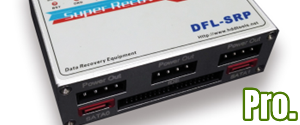
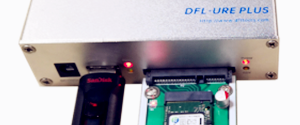
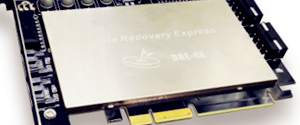

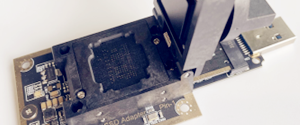
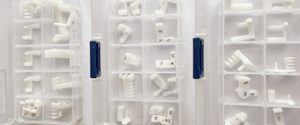
9 Comments
Despite technological advances in the reliability of magnetic storage media, the incidence of data loss continues to rise. Data storage remains a fragile science, and data’s susceptibility to damage from both natural and human sources remains high.
the convergence of three major trends influencing data loss today. These trends represent industry-wide shifts in technology and market behavior.
1) More data is being stored in smaller spaces. Ten years ago hard drives stored 40 megabytes (MB) of data. Today’s hard drives store up to 9 gigabytes (GB) on a smaller surface than the drives of a decade ago. Increasing storage capacities amplify the impact of data loss. As more and more data is stored in smaller and denser areas, mechanical precision becomes crucial.
As a part of this advancing technology, the drive tolerance (distance between the read/write head and the platter where data is stored) is steadily decreasing. A slight nudge, a power surge or a contaminant introduced into the drive may cause the head to touch the platter, resulting in a head crash. In some situations, the data residing in the area touched by the head may be permanently destroyed.
The current tolerance on most drives is 1-2 microinches (one millionth of an inch). Comparatively, a speck of dust is 4-8 microinches and a human hair 10 microinches. Contaminants of this size can cause serious data damage.
2) Data has become more mission-critical. Bank account transactions. Hospital patient records. A graduate school thesis. Income tax documentation. New product plans. Automobile engineering designs. Payroll records. Sales transactions.
Users today store data on their desktops and networks that is mission-critical to their organizations and their personal lives. Loss of mission-critical data, by definition, causes major business processes to stop. This, in the worst instance, can cause a company to go bankrupt. System administrators can lose their jobs. Companies can lose faithful customers who lose trust as a result of the company’s failure to deliver as promised. The financial, legal and productivity ramifications associated with the loss of critical data puts companies and individuals at great risk.
3) Backup technology and practices have failed to adequately protect data. Most computer users rely on backups and redundant storage technologies as their safety net in the event of data loss. For many users, these backups and storage strategies work as planned. Others, however, are not so lucky. More than 80% of Ontrack’s customers back up their data, only to find their backups useless in that crucial moment when they need to restore from them.
Why do these backups and redundant storage systems fail? They fail because the systems are designed with a set of requirements that rely on a combination of technology and human intervention for success. For example, backup systems assume that hardware is in working order; they assume that the user has the time and the technical expertise necessary to perform the backup properly; they assume that the backup tape or cartridge is in working order; and they assume that the backup software is not corrupted.
In reality, hardware can fail. Tapes and cartridges do not always work properly. Backup software can become corrupted. Users accidentally back up corrupted or incorrect information. Backups are not infallible.
What are the Leading Causes of Data Loss?
Hardware or System Malfunction 44%
Human Error 32%
Software Program Malfunction 14%
Viruses 7%
Natural Disasters 3%
Thanks for posting our articles.
Continuing as following:
Cause of Data Loss
* 44% of all data losses are caused by hardware or system malfunction.
Possible Symptoms
* Error message stating that the device is not recognized
* Previously accessible data is suddenly gone
* Scraping or rattling sound
* Hard drive may not spin
* Computer or hard drive does not function
Examples
* Electrical failure
* Head/media crash
* Controller failure
Preventive Measures
* Protect electrical components by using computers in a dry, shaded area that is clean and dust-free.
* Protect against power surges and subsequent electrical failure by purchasing a UPS (Uninterruptible Power Supply).
* Do not shake or remove covers on hard drives or tapes. Even the slightest movement can cause a head crash or misalignment of the platters.
Recovery Tips
* Drives that have suffered physical damage should only be opened in a Class 100 clean room to ensure a controlled environment.
* Do not attempt to operate a hard drive that you suspect may have hardware or system failure.
* Never use software recovery utilities, such as Norton Disk Doctor, to repair data in a hardware failure situation. These utilities assume that the hardware is functional and may cause further damage.
Cause of Data Loss
* 32% of all data losses are caused by human error.
Possible Symptoms
* Previously accessible data is suddenly gone
Examples
* Accidental deletion
* MIS/Administrator mistakes
* Trauma caused by drop or fall
Preventive Measures
* Never attempt installations, repairs or any operation with which you do not have previous experience.
* To protect against trauma, avoid moving your computer, especially when it is in operation.
Recovery Tips
* Files accidentally deleted may be recovered with the undelete feature included with most operating systems.
* Only entrust your data to someone who has the training and expertise to repair your system or recover your data.
* For trauma damage, follow recovery tips designed for hardware or system malfunction.
Cause of Data Loss
* 14% of all data losses are caused by software corruption or program malfunction
Possible Symptoms
* Error message stating that data is inaccessible or corrupted
* Memory errors
* omputer malfunction
* Software application will not load data
Examples
* Corruption caused by diagnostic or repair tools
* Failed backups
* Configuration complexity
Preventive Measures
* When writing or copying data to a hard drive, confirm that the area to which you are writing is indeed where you want the information to be stored.
* Do not run the risk of overwriting good data.
* Back up data and test restore capabilities on a regular basis. Just because you have a backup does not mean it will successfully restore when you need it.
* Have a firm understanding of the system setup before attempting to install new software.
* Use diagnostic utilities with caution.
Recovery Tips
* Make certain all software is properly installed.
* Reinstall from backup.
* Only use repair utilities if you are sure that the damage is software-related. Using recovery utilities in the wrong situation can irreparably harm data.
Cause of Data Loss
* 7% of all data losses are caused by computer viruses
Possible Symptoms
* Message appears on screen. For example, the Stoned virus states, “Your computer is now stoned.”
* Blank screen
* Strange and unpredictable behavior
* Error message stating, “File not found.”
Examples
* Anti-CMOS
* Anti-EXE
* Michelangelo
* Monkey
* Stoned
* While other viruses may contribute to data loss, these are the top five viruses seen in Ontrack’s data recovery lab.
Preventive Measures
* Use anti-virus software and update it at least four times per year.
* Scan all incoming diskettes for viruses. This includes packaged software, software carried on-site by users and software downloaded via modem, bulletin board services or the Internet.
* Obtain software from reputable sources.
* Do not accept email files attachments from people you do not know.
* Virus check any attachments you receive.
* Always eject the floppy diskette before you turn off your computer.
Recovery Tips
* Call an anti-virus software vendor. Often, data will become accessible when the virus is removed.
* Do not reformat your hard drive or diskette. This may remove some viruses, but will permanently destroy data.
Cause of Data Loss
* 3% of all data losses are caused by natural disasters.
Possible Symptoms
* While floods, fires and hurricanes have visible symptoms, lightning strikes and brownouts often leave no clue other than that you will not be able to access data that was previously there.
Examples
* Floods
* Lightning/brownouts
* Fires
* Earthquakes/hurricanes
Preventive Measures
* Store tested backups in an off-site location that is not prone to the same natural disasters experienced where the original data is stored.
* Install a UPS.
* Do not store your mission-critical data in a flood plain.
Recovery Tips
* Have a disaster recovery plan in place that includes instructions for recovering data.
* Do not attempt to operate a visibly damaged hard drive or one you suspect may be damaged.
* Do not use any storage device that has been exposed to heat, moisture or soot.
Anatomy of a Data Loss
How does a hard disk drive store data? Hard disk drives store data on one or more metal oxide platters. These platters, which spin at a rate of 3600-7200 revolutions per minute, hold magnetic charges. A read/write head attached to an actuator arm hovers 1-2 microinches (one millionth of an inch) above the surface of the platters. Data flows to an from these heads via electrical connections. Any force that alters this process may cause data loss to occur.
Top 10 Data Protection Tips
1. Back up data and test restore capabilities on a regular basis. Verify that the correct data is backed up.
2. Keep your computer in a dry, controlled environment that is clean and dust-free. Set up your computer in an area with very little traffic to ensure that it does not get bumped.
3. Only entrust your data to someone who has the training and expertise to properly maintain and repair it.
4. Use diagnostic and repair utilities with caution. Never use file recovery software if you suspect an electrical or mechanical drive failure.
5. Use anti-virus software and update it at least four times per year.
6. Check all incoming diskettes for viruses. This includes packaged software, software carried on-site by users and software downloaded via modem, bulletin board services or the Internet.
7. Never attempt to operate a visibly damaged hard drive. Do not use any storage device that has been exposed to heat, moisture or soot.
8. Do not shake or remove the covers on hard drives or tapes.
9. Use a UPS (Uninterruptible Power Supply) for proper power protection.
10. Immediately turn off your computer if it begins making an unusual noise. Further operation may damage it beyond repair.
Ontrack Data Recovery
With its proprietary service and software tools, Ontrack is able to provide data protection and recovery solutions that are unmatched in the industry. Ontrack provides a unique “full-service” line of offerings, with its research and development team and data recovery engineering staffs working together to provide the most comprehensive and technically superior data protection and recovery options available.
Ontrack has invested heavily in its research and development efforts. With the rate at which the computer industry is advancing, these efforts are essential to maintaining our leadership position in the market. Ontrack is currently sponsoring a graduate study program at a leading university which is focusing on disk drives and storage-related research, and has plans to add similar programs to its schedule.
Ontrack data recovery services continue to be recognized as the largest and most-highly regarded in the industry. Having performed tens of thousands of successful recoveries on all types of storage devices and all operating systems, Ontrack is the data recovery company other data recovery companies turn to when they cannot recover a customer’s data! Ontrack is endorsed by all major hard drive manufacturers and can work on corrupted machines without violating warranties.
Remember source: http://www.ontrack-japan.com